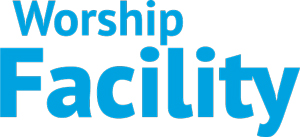Your congregation is filled with people of varying skills, talents, and interests who would be interested in serving in a ministry at your church. It’s likely that some of those people may have disabilities, and you may be wondering how to help them best serve.
According to STEPS (Student Training & Education in Public Service), an estimated 12.6% of the U.S. population lives with a disability, and one in every four adults. Most challenges are physical (14%) or cognitive (11%) in nature, although millions of Americans also have difficulty with vision, hearing, and overall self-care.
Learn About the Volunteer’s Disability
When working with a volunteer with disabilities, learning about their disabilities can help you find things that suit them. According to the World Health Organization and STEPS, there are 8 categories of disabilities that may affect their lives:
- Mobility/Physical Disabilities impacting a person’s “movement, coordination, or dexterity.” This includes amputations, arthritis, and fibromyalgia.
- Head Injury/Brain Disabilities affecting “how a person thinks, their personality, and who they are.” These include epilepsy, stroke, and dementia, as well as physical trauma to the brain resulting from an accident.
- Spinal Cord Disabilities causing “a loss of movement or sensation of the impacted area.” Common types include multiple sclerosis, Spina bifida, and para- or quadriplegia. Often, they will require a wheelchair or other walking aid.
- Vision Disabilities including any sort of partial to complete blindness, cataracts, and glaucoma.
- Hearing Disabilities ranging from partial to complete hearing loss.
- Cognitive & Learning Disabilities that make it difficult to accomplish certain mental tasks, including reading, learning, or speaking. People with these conditions may also have trouble with “memory, problem solving, attention, words, numbers, or visual processing.”
- Psychological Disabilities which “affect a person’s emotions, thinking, and behavior.” Common disabilities include bipolar disorder, depression, and eating disorders.
- Invisible Disabilities which are not obvious, but still make it difficult for a person to accomplish tasks. These can include Post-Traumatic Stress Disorder (PTSD), Dyslexia, autism spectrum disorder, Attention Deficit Hyperactivity Disorder (ADHD), Chronic Fatigue Syndrome, or Diabetes.
Work Together to Find the Right Fit
Once you have a better understanding of the challenges they face, you can begin helping them find their niche in your church’s ministry opportunities. Here are 6 ideas to encourage your attendees with disabilities to find their niche in your church.
- Ask them what their passions are to find the right fit. Don’t just assume you know what’s best for them. Laurel Neff Swanson, Administrator at Lutheran Church of the Cross in Altoona, IA, shared, “We had a member of our church who was blind, and he could actually paint for us—no joke!” They never would have discovered that if they hadn’t asked him how he would like to serve.
- Provide them with routines and/or assigned tasks in a specific area. Many individuals with disabilities have developed routines in their personal lives. Routines and spaces they’re familiar with provide a sense of security that allows them to more freely serve. Find tasks that can be done to fit within the boundaries that they need.
- Offer suggestions if they’re unsure. Perhaps they enjoy vacuuming spaces, or wiping down the nursery toys to disinfect them. Maybe they would be great at learning how to work the audio-visual equipment in your sanctuary. Or they might love being Sunday School teachers. Having a list of ministry needs ready will help you ask the right questions to find their niche.
- Include their family and friends in the conversation. Sometimes those closest to us know us better than we know ourselves, and they can offer insights that the individuals may not have considered.
- When thinking about their fit in ministry, consider things that may trigger strong emotions or behaviors. For some individuals, certain situations may cause flare-ups or panic attacks. Make sure to discuss these things with volunteers so that you can help them have a plan in place when these things happen. This also can help you choose ministry options that will minimize these triggers from happening in the first place.
- Pray with them. It may be that nothing you suggest sounds interesting to your potential volunteers. If this is the case, spend time in prayer with them, which is the simplest idea at the heart of ministry.
Ultimately, the goal is to help every person in your church get connected so they can better serve together. Individuals with disabilities want the same chances to do this as every person, so work together to discover the right fit. These steps can help you connect those with and without disabilities and better understand where their God-given gifts, talents, and abilities best fit.

